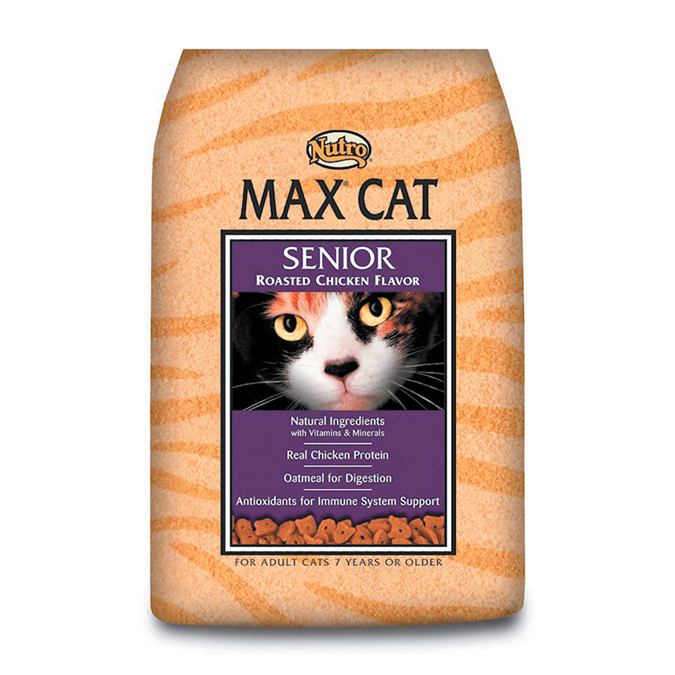Pet food is a multi-billion-dollar industry in the U.S., and companies spend no small amount of money deciding what words to put in large, bold letters on the front of their packages to get you to buy their brands. But many of the come-hither terms have no legal definitions. They mean whatever the manufacturer wants them to mean. Others do have legal definitions, but they do not match the popular definitions, so they can confuse consumers into thinking a food has a special quality that it doesn’t. And some pet foods are simply misbranded. Here’s a guide for which terms to ignore, or at least rethink, when choosing food for your cat.
Human-grade. “Human grade” is much more about the plant the food is processed in than where the food came from. For instance, chicken, whether for people or cats, comes from the same bird. It’s just that “human grade” chicken is processed in a plant or kitchen licensed to produce food for people, while chicken that gets put into pet food — which could include breast or thighs, but also nutrient-packed internal organs and the parts you pick off to make soup — goes to plants that manufacture pet food. All these ingredients work together to meet your cat’s nutrient needs. Just as important, they are pleasing to cats’ taste buds.
More to the point, products marketed as “human grade” are not necessarily higher quality nor better options in any other way. The Association of American Feed Control Officials (AAFCO) sets the standards for the levels of nutrients that should be in cat food, and that’s a separate issue from the origin of the food’s ingredients.
We should note that “human grade” food for cats tends to be relatively expensive compared to regular cat food. There’s no need to purchase it, either for your cat’s health or enjoyment of meals.
Premium. It sounds good, but it’s meaningless. It’s “premium” only because the company says it is, and because you will pay more for the term.
Organic. This one’s tricky. AAFCO does not have a definition for “organic.” It uses the legal definition set forth by the U.S. Department of Agriculture, which states that “organic” products are “produced through approved methods that integrate cultural, biological, and mechanical practices that foster cycling of resources, promote ecological balance and conserve biodiversity.” The rub is that the USDA system was never intended to be used for pet food. And many pet foods don’t fit well into the current regulations, so “it’s a regulatory black hole,” says board-certified veterinary nutritionist Cailin Heinze, VMD.
If a pet food does meet the USDA guidelines, it must be made of at least 95 percent organic ingredients and will display a USDA organic seal. If it doesn’t, you should question the integrity of the claim.
Holistic. Unfortunately, this is purely a marketing term. Without a definition, it can mean whatever the company decides.
Gourmet. This one is right up there with “premium.” Unless the manufacturer can convince you that Wolfgang Puck or Jacques Pepin personally cooked the kibble, don’t be swayed by this term.
Senior. By law, food for kittens must contain specific levels of nutrients to support growth until the pet reaches adulthood. But there’s no legal requirement for so-called senior food because every cat needs something different as it grows older; there is no one-size-fits all. And if you switch your cat over to “senior” food at some point, you might actually see some untoward effects. Sometimes a cat turns 10 or 12, and her owner puts her on “senior” food that might contain significantly more or less protein or phosphorus than the old. That, in turn, could affect a cat’s health status, particularly if she has kidney disease. Too much or too little protein or phosphorus, depending on the stage of disease, could worsen the condition. Instead of picking a new food based on marketing, work with your vet as your cat gets older to see if she needs a modified nutrient profile. (Her current adult food may be the best choice for her entire life,)
Natural. Most ingredients in cat food are natural to begin with, meaning they are derived from animal, plant, or mined sources. The ingredients that tend to be laboratory-synthesized are added vitamins and minerals that fortify the product nutritionally. And they tend to have forbidding-sounding names on the ingredients list, which gives some consumers pause. But it is nearly impossible to meet AAFCO nutrient profiles for cats without adding some synthetic supplements. As an example, the B vitamin thiamine is lost with cooking — it would be very difficult to have enough thiamine to survive the cooking process if you didn’t use a concentrated supplement.
Thus, while you can buy food that is “100% natural,” or “natural with added vitamins and minerals” (a loophole that allows synthetic supplements if the main ingredients are indeed natural), and while legally it means the ingredients are not made in a lab, it does not mean the food is better for your cat than one without the “natural” burst on the label.





I think if you do your research, you will find that “human grade” food for cats and dogs is legitimately better quality, cleaner, safer, and healthier than non-human grade food.